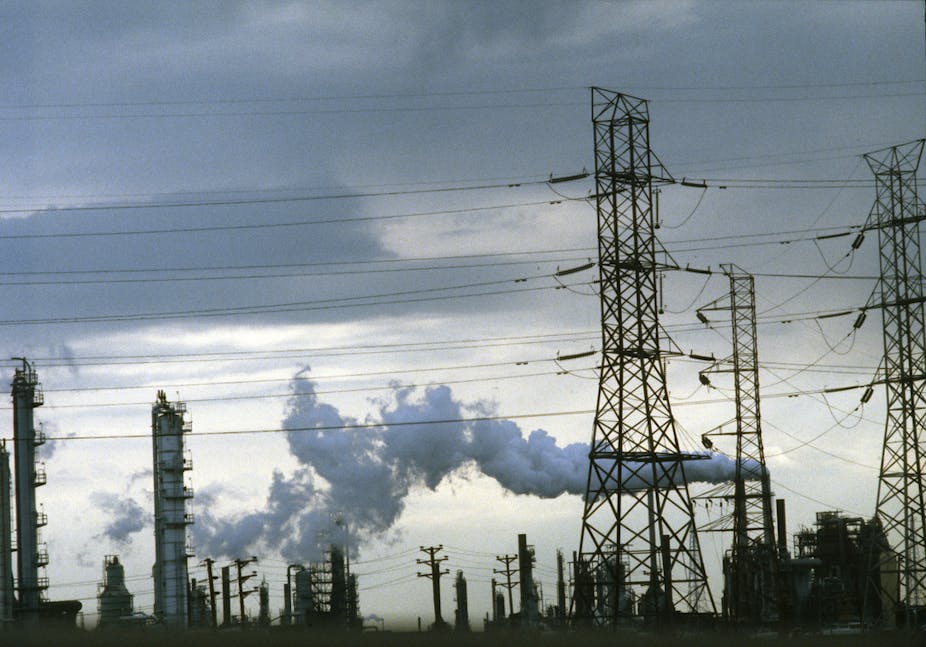A recent MIT study claims that total combustion emissions in the US account for about 200,000 premature deaths per year. This enormous figure is not unique. In the UK, roughly 29,000 premature deaths are estimated to result from one year of emissions. Worldwide this figure amounts to 800,000 deaths.
Rapid urbanisation around the world brings with it intense energy consumption and increased emissions from transportation and industrial sources. As a consequence, people in both developed and developing countries are exposed to more diverse and unhealthy concentrations of air pollutants.
Scientific research has confirmed the detrimental effects of air pollution on mortality, and the increased risk of cardiopulmonary disease. Studies are now investigating the potential for air pollution to exert a wider threat, for example by negatively influencing unborn children, or contributing to neurodegeneration in the elderly.
Particulate matter is a complex mixture of finely divided liquid droplets or solids in a gaseous medium. It is released into the air by a variety of combustion sources, which together with the chemical make-up and size of the particle, appears to determine its toxic effects. Particulate matter with a diameter of between 0.1 and 2.5 millionths of a metre (PM 2.5)is the air pollutant most strongly associated with an increased risk of death.
Ozone is a major constituent of photochemical smog. It is generated at ground level by atmospheric reactions of UV light with oxides of nitrogen and hydrocarbons produced by motor vehicles, industry and plants. Once generated, ozone can travel long distances, for example, to less polluted regions, where it can accumulate and reach high concentrations far away from the original source.
The MIT study draws upon pollutant emissions data, meteorological and air quality models and epidemiological evidence to quantify particulate matter and ozone-related premature deaths in 2005.
These deaths were attributed to electric power generation, industry, commercial or residential activities, and road, marine and rail transport. In the US, human-made combustion emissions represent the predominant source of PM2.5 and ozone that people breathe.
Total combustion emissions in the US were found to be responsible for about 200,000 premature deaths per year due to long-term exposure to increased PM2.5 concentrations. Additionally, roughly 10,600 premature deaths were due to exposure to increased ozone concentrations.
When looking at these figures it must be borne in mind that quantifying the impact on health of pollutants and their sources is challenging. While total mortality is the easiest endpoint to tackle, the complexity of the area means that results are always going to be accompanied by uncertainties.
The two largest contributors for both pollutant-related mortalities were found to be road transportation and power generation. Road transportation caused an estimated 53,000 PM2.5 and 5000 ozone-related early deaths per year. Power generation accounted for 52,000 PM2.5 and 2000 ozone-related premature mortalities per year.
These findings led the authors to conclude that a reduction of particulate matter emitted from power plants (sulphur dioxide) and road transport (black carbon) should be considered for future US energy and air quality policies.
In the UK, the Committee on the Medical Effects of Air Pollutants (COMEAP) carried out a recent appraisal of the effect of air pollution on mortality, concluding that the burden of man-made PM2.5 air pollution had an effect on mortality in 2008 equivalent to nearly 29,000 deaths.
They also estimated that a policy aimed at reducing the annual average concentration of PM2.5 by 1 microgram per metre cubed would save approximately 4 million life years: equivalent to an increase in life expectancy of 20 days in people born in 2008.
COMEAP did not attribute the 29,000 deaths to different emission sectors. However, because road transport emissions in the UK represent a much higher fraction of total PM2.5 than in the US (30.1% vs 6.9% - 2005 figures), the significant contribution of this sector to poor air quality cannot be ignored.
Greater PM2.5 emissions originating from road transport in the UK are due to the high penetration of diesel vehicles on the roads, and as such, tighter regulation of the use of this fuel would seem a sensible way forward for the UK government to attain further improvements in air quality.
Outdoor air pollution at current levels makes a significant contribution to mortality. This emphasises the crucial role that modern day environmental health research has in setting public policy and improving health. Deaths could be delayed, and an enormous potential exists to achieve this.
The MIT study will generate interest and stimulate discussion in the short term. More importantly, the study goes some way towards assessing the health impact caused by different types of human activities. It is therefore hoped that such research will be used in the longer term to guide refined regulation and optimise pollution control strategies. This will encourage the achievement of the best possible improvement in the impact of air pollution on public health.

